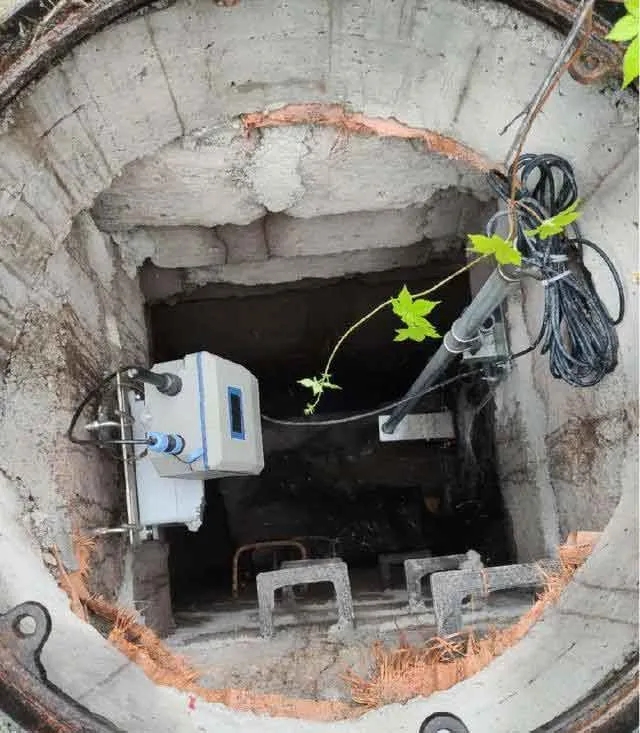In order to ensure the normal life and personal safety of urban residents, it is urgent to speed up the construction of smart cities and solve the problem of urban waterlogging.
Heavy rainfall brings challenges to the urban drainage system. Then how to solve urban waterlogging has been a top priority for the Water Supply Bureau.
There is a lot of rain in the summer. Heavy rainfall has brought disasters to people such as landslides, mudslides, and floods, causing significant loss of life and property.
At the same time, heavy rainfall has also brought greater challenges to the urban drainage pipeline system that the drainage wells are blocked, waterlogged, and sediments accumulate. Various types of waterlogging occur frequently then. In such extreme weather, the lag in the construction of traditional urban drainage pipeline systems, weak monitoring capabilities, backward monitoring methods, high maintenance, and management costs, all these difficulties are exposed.
In order to ensure the normal life and personal safety of urban residents, it is urgent to speed up the construction of smart cities and solve the problem of urban waterlogging.
What are the reasons for the frequent occurrence of urban waterlogging?
1. Long-term heavy rainfall caused the water level to rise, and the urban drainage system could not drain water in time, causing inconvenience for residents’ daily life.
2. The water storage level of cellars and other places has reached the warning line while the alarm and dredging are not issued in time, which causes the manhole cover to be washed away after the water level rises, and fall accidents occur.
3. Roads, culverts, tunnels, and other places where water is easy to accumulate are also easy to accumulate debris, resulting in poor drainage, the water level rises more rapidly, vehicle flameouts may occur, and even personal safety may be endangered.
4. Drainage leakage occurs due to the aging of the pipeline, and there may be blockage while the pipeline is buried deep underground, which is difficult to monitor. Thus, small problems often cause major accidents.
5. The manual inspection has a lot of limitations; the internal problems of the pipeline cannot be detected by manpower. The loss of the manhole cover may also cause accidents to the monitoring personnel, which is time-consuming and laborious, and the monitoring data cannot be returned in time.
Establish an intelligent and real-time monitoring urban underground drainage pipe network system, which can effectively monitor waterlogging, drainage pipes, and other facilities in real-time, and make timely warnings to prevent tragedies.
How to effectively monitor and warn urban waterlogging?
Rainfall is the first source of many water-related problems. If you grasp the details of rainfall for the first time during the flood season, you will have the initiative in flood control. Similarly, the first cause of urban waterlogging is the prolonged rainstorm, which caused a surge of rainwater and the inability of timely drainage. Therefore, to solve urban waterlogging, real-time rainfall monitoring is primarily considered.
For this, a rainfall monitoring solution. Connect the LoRaWAN Bridge and the rain gauge through the Modbus protocol and PI/AI interface to form an IoT rain monitoring system, which monitors the precipitation in real-time. Linked with the GIS platform to track the position, the system can timely return data to effectively ensure the accurate precipitation data to support the corresponding early warning processing.
This rainfall monitoring system supports OTA, which can realize remote firmware upgrades and remote configuration of device operating parameters. It can run in a low-power consumption state to meet the requirements of more applications.
In addition to precipitation, roads, culverts, tunnels, and other places are easy of water accumulation due to insufficient drainage or clogging of debris, leaves, and other debris. The liquid level of the well is not monitored in time and the water level data is returned, causing problems such as overfilling.
Milesight provides the flood-prone point monitoring solution which connects the Liquid Level transmitter to monitor the road water accumulation and the liquid level of the well in real-time. The protection level of the equipment used in the entire system is IP68, avoiding the influence of harsh working environment on the equipment.
In the drainage process, there will be problems such as pipeline blockage and pipeline leakage, which can cause untimely drainage. In addition, some excessive pollutants may be mixed with rainwater to be discharged due to untimely detection during the drainage process, causing environmental pollution problems, etc.
The pipeline network flow monitoring solution designed by milesight matches with the flow meterthrough LoRaWAN to monitor the pipeline network flow in real-time, and feedback abnormal flow data in time to determine the congestion situation and deal with emergency situations. The remote monitoring terminal adopts a high-gain antenna to avoid data loss or transmission interruption due to weak underground signals.
In addition to the need for close monitoring of drainage, the concurrent waterlogging will also lead to many concurrent hazards. Take the missing manhole cover as an example. Over the years, more and more personal safety accidents have been caused by the missing manhole cover. How to investigate the drainage manhole covers faster and more comprehensively in the city? How to monitor the condition of each manhole cover in the pipeline?
drainage pipeline monitoring system helps to solve this problem. The abnormal switch can monitor the manhole cover opening and closing in real-time. If the manhole cover is opened by non-maintenance personnel and an abnormal alarm will be issued, the data will be transmitted in real-time through the remote monitoring terminal. Thus, the personnel will know the safety status of the manhole cover in time and carry out risk elimination effectively.
Smart pipe network upgrades promote the construction of smart cities
With the deepening of new infrastructure, the traditional urban infrastructure can no longer meet the needs of social development. The underlying pipeline system is one of the important infrastructures that need to be upgraded. A truly smart city needs a more convenient, more efficient, and more environmentally friendly and smarter pipeline system.